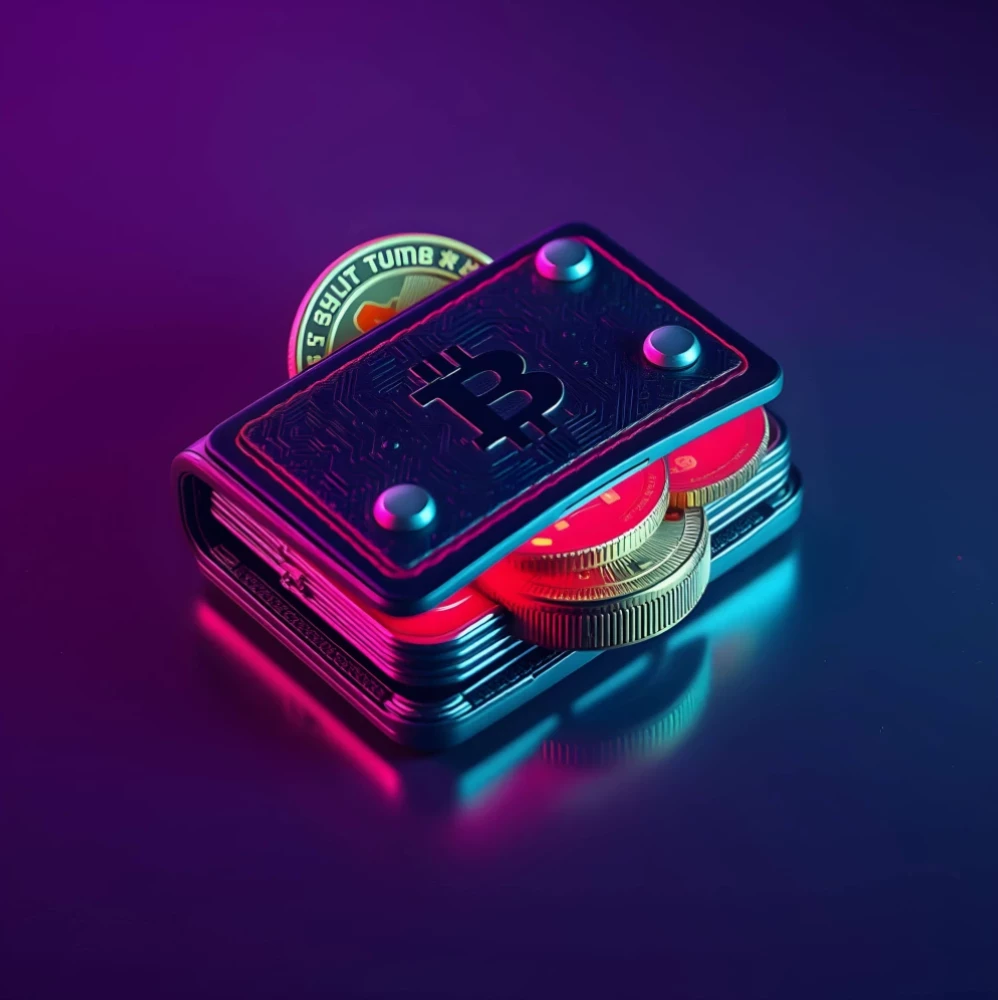Crypto Wallet: How to get a wallet for crypto?
Digital currencies are stored in crypto wallets and nowhere else. The storage can be physical – hardware wallets; it can be an application or web extension – software wallets. Some work only with bitcoins, others are multi-currency. How to use a crypto wallet? How to secure the storage? How to set up a cryptocurrency wallet? We will tell you.
What is a cryptocurrency wallet
A crypto wallet is a device or program for storing and managing tokens. Inside there are two cryptographic keys:
- Public. Address for receiving coins from other wallets, similar to bank details.
- Private. Only the owner has it. Grants the right to manage crypto assets – something like a PIN code for a bank card.
Thus, a public key is needed to receive funds, a private key is needed to transfer them.

Types of crypto wallets
Now from essence to form. There are two of them: hot and cold crypto wallets.
- Hot. The storage is a website, computer program or mobile application. It works only with an Internet connection, since the keys are stored in the blockchain. Using such wallets is much more convenient: you can quickly receive, send, exchange coins. The risks are obvious: the application can be hacked, the keys can be stolen.
- Cold. A piece of paper with a code and address or a flash drive (hardware wallet). Both media are disconnected from the Internet and therefore inaccessible to hackers. It is inconvenient to use cold wallets on a daily basis: they are more suitable for long-term storage of cryptocurrencies than for active management of them.
The owner of the cryptocurrency can divide his digital assets and keep them in wallets of different types: for long-term storage - in a cold one, for frequent trading operations - in a hot one.
How to create a cryptocurrency wallet
All crypto wallets are created using a similar algorithm: keys are generated, security options are configured, a backup copy is created. The stages of the process look like this:
- Key generation. The user receives two unique sets of symbols that will allow him to manage the wallet.
- Assigning an address. Based on the public key, another sequence of numbers and letters is created – the crypto wallet address.
- Security settings. You need to come up with a strong password and enable additional storage security options.
- Create a backup copy. It will be needed to restore access to the wallet.
Manufacturers can also add additional steps to register a new crypto wallet.
How to use a crypto wallet
Cryptocurrency wallets allow you to store, send, and receive tokens. The user signs each transaction with a private key. The record is saved in the blockchain - it cannot be corrected or erased.
Storage of crypto
The first step to storing cryptocurrency in your wallet is to buy tokens. Many software storages are integrated with exchanges. Trading platforms allow you to buy coins on the spot market or through P2P. Hardware wallets often lack this function because they are disconnected from the Internet. The solution is to buy cryptocurrency on the exchange (it will end up in a hot wallet) and, if necessary, send the tokens to cold storage.
Receiving cryptocurrency
To top up your crypto wallet balance, you need to:
- Copy the address of the cryptocurrency wallet;
- I am sending you the address;
- Wait for the sender to initiate the transaction and for the network to confirm the transfer.
Received funds are displayed on the account immediately after confirmation in the blockchain.
Sending tokens
Transferring funds to another wallet occurs as follows:
- Enter the recipient's public key;
- Specify the transaction amount;
- Confirm the transfer of tokens with a private key;
- Wait until the transaction is encrypted, sent to the blockchain, and confirmed.
In general, the procedure for sending and receiving tokens to a crypto wallet is not much different from bank transfers. Only instead of a card or phone number, there is a public key, and instead of a PIN or SMS code, there is a private key.
Crypto wallet security settings
The reliability of a cryptocurrency wallet largely depends on the user. To increase the security of the storage, you need to:
- Activate two-factor authentication (2FA). Additional wallet protection by confirming login and transactions with a one-time code is enabled in the program settings.
- Create a complex password. Date of birth, username or parrot's nickname are bad ideas for a password. A reliable combination includes at least 12 characters: numbers, uppercase and lowercase letters, special characters.
- Protect your seed phrase. The recovery phrase should be stored in a safe place.
- Avoid phishing sites. Check the reliability of the pages where you plan to log in to your crypto wallet.
The most secure wallets are hardware ones. If you take precautions, software storages will be impossible to hack.
Conclusion
A cryptocurrency wallet is a must-have tool for investing in digital assets. In addition to storage, a crypto wallet supports the functions of replenishing and sending funds. Hot wallets are as secure as possible, but are not suitable for active traders. The reliability of a software crypto wallet largely depends on the security measures taken by the user.

